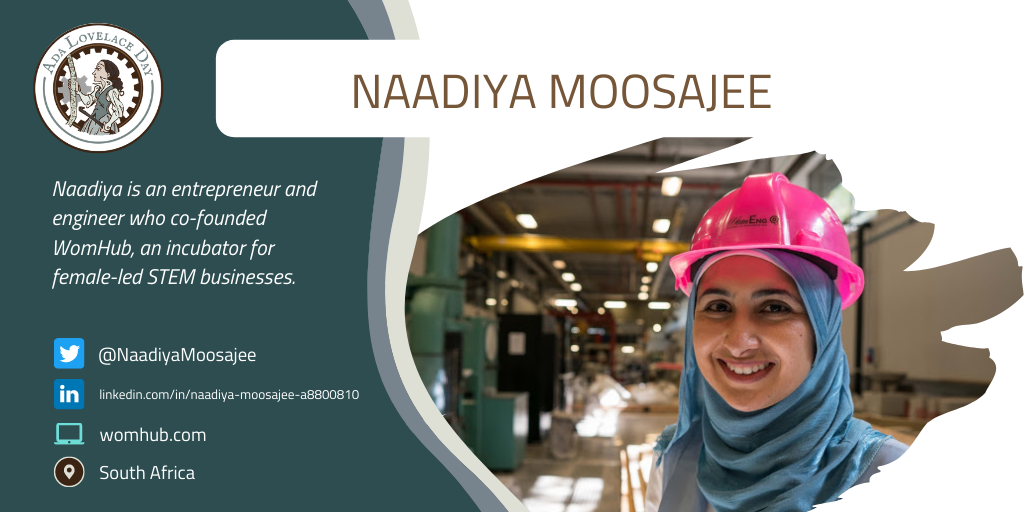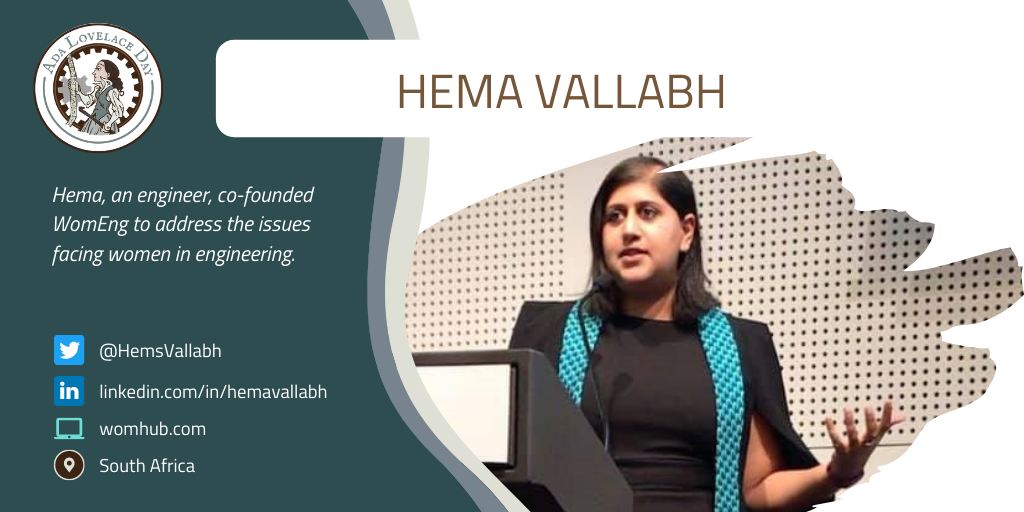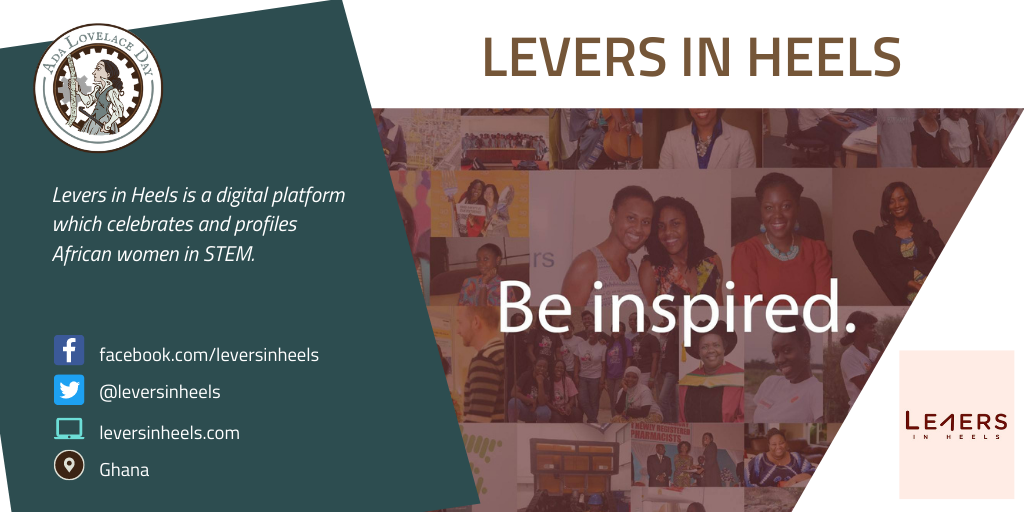Naadiya Moosajee
Location: South Africa
Naadiya is an entrepreneur and engineer who co-founded WomHub, an incubator for female-led STEM businesses, and is also a co-founder of WomEng. She was listed as one of the 20 Youngest Power Women In Africa 2014, was a Unilever Young Entrepreneurs Awards Finalist in 2017 and was one of 12 African leaders accepted onto the Facebook Community Accelerator this year.
You can follow her work here:
Twitter: @NaadiyaMoosajee
LinkedIn: linkedin.com/in/naadiya-moosajee-a8800810
Website: womeng.org
Further reading
- Naadiya Moosajee, Wikipedia
- Just 1 in 5 Engineers in South Africa Are Women. It Inspired This Engineer to Break Down Barriers, Global Citizen, 23 March 2020
- Naadiya Moosajee-Civil Engineer, Entrepreneur, Global Women Engineering Advocate (podcast), Ordinarily Extraordinary – Conversations with women in STEM, 11 July 2020




